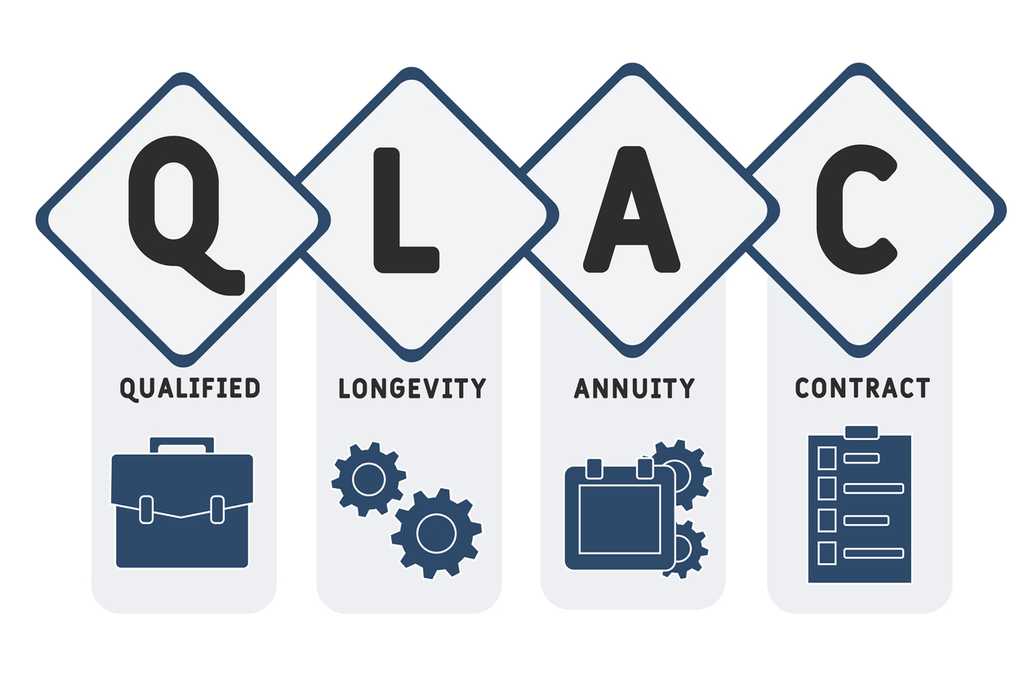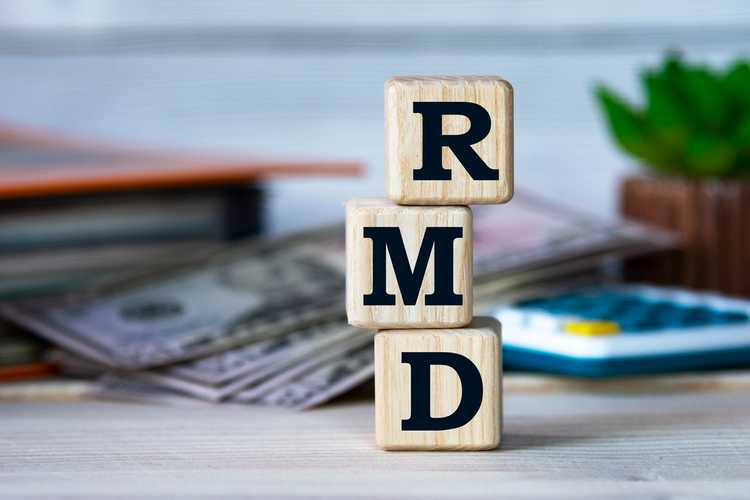What is a QLAC?
QLAC stands for qualified longevity annuity contract. A QLAC is a type of deferred annuity that is funded with an investment from a qualified retirement plan like a 401(k) or via a traditional IRA. QLACs were introduced in 2014.
A QLAC is purchased through an insurance company and allows you to defer as much as 25% of your retirement account assets, up to a maximum of $135,000 into a QLAC. This amount is a total across retirement accounts, not per account.
How does a QLAC work?
A QLAC is a type of deferred fixed annuity sold by insurance and other financial services providers. QLACs can only be purchased with money from an IRA or other qualified retirement plan accounts. QLACs must meet the requirements set by the government that allow for the purchase of these annuities through retirement plans.
The longevity part of the name refers to the ability to defer up 25% of your balance, with a maximum of $135,000, in an annuity out as far as age 85. You don’t have to choose age 85, you can choose an earlier age to begin the annuity payments.
QLACs can offer a number of benefits, but perhaps the main benefit is that it allows you to defer withdrawing a portion of your retirement savings until a later date. This can help ensure that you don’t spend too much in the earlier years of your retirement, leaving a portion of your retirement savings earmarked for the latter portion of your retirement. This is especially important with so many people having longer life expectancies.
The annuity benefit would commence at whatever age you’ve specified. This money has not been taxed or subject to required minimum distributions to this point.
Since there are no taxes or RMDs on Roth IRAs you can’t do a QLAC with the money in a Roth IRA. Inherited IRAs are also not eligible for a QLAC.
QLACs and required minimum distributions (RMDs)
Money that is used to purchase a QLAC serves to reduce the amount that is subject to RMDs. Money in a traditional IRA, as well as in traditional retirement accounts like a 401(k) or 403(b), are subject to RMDs once you reach age 72.
The money deferred to a QLAC is exempt from this calculation, reducing the amount of your RMD and the taxes due on those RMDs.
For example, if your traditional IRA balance is $1 million at age 72 your RMD for that year would be $39,063 based on the $1 million divided by the IRS factor of 25.6 for age 72.
If you purchased a QLAC at the maximum of $135,000 in the IRA, then your RMD would be $865,000 divided by 25.6 or $33,789. While this doesn’t seem like a huge savings, if you take this out 10 or 15 years it can add up in that this money is allowed to remain invested and grow tax-deferred in the account.
QLAC contribution limits
The limit as to how much can be contributed to a QLAC is the lessor of $135,000 or 25% of your qualified retirement plan account balance. The $135,000 would equate to 25% of an account balance of $540,000. With an account balance higher than $540,000, your maximum contribution would remain at $135,000, with an amount less than $540,000 your maximum QLAC contribution would be 25% of the account balance.
The $135,000, 25% limits are lifetime limits across all eligible retirement accounts. There are not separate limits for each IRA account, 401(k) account, or other types of retirement account.
These limits could potentially be revised over time via new legislation.
How A QLAC Can Reduce Your Taxes
Using the example above with the reduction in the RMD from $39,063 to $33,789, for someone in the 24% tax bracket this would result in a tax saving of $1,266 for the year. If their state imposes a state income tax on retirement plan withdrawals, there would be additional tax savings on their state income tax as well from the reduced RMD amounts.
Once you start to receive the QLAC payments, the amount of these distributions will be taxed to you at your ordinary income rate at the time of the distribution, just like any other withdrawal from an IRA or retirement account.
What is A QLAC cash refund death benefit?
When purchasing a QLAC you have a number of choices to make in terms of the distributions and also what happens to the QLAC upon your death.
One option is that the payments stop when you die. This is essentially a single life annuity. All else being equal, the payments will be higher than with other options as this alternative poses less risk of higher overall payments than other annuity distribution options.
Another annuitization option is a joint and survivor annuity. In this case payments will be made if you die first to your surviving spouse until their death. If your spouse predeceases you, then payments will continue until your death. This option will typically yield a lower payment level than a single life option.
Another option is a cash refund death benefit in which payments stop upon your death. At that time a refund of the difference between all annuity payments made to you and the amount paid in premiums, if higher than the amount to total annuity payments made, would be refunded to a named beneficiary. This type of arrangement will also serve to reduce the level of annuity payments received due to the risk that the insurance company may need to refund some of the QLAC premium payments.
At what age should you collect QLAC income?
You can defer taking payments on a QLAC out to age 85, but you can also begin payments at an earlier age. The best time to commence payments will depend upon your unique situation.
For example, if you are in poor health with a reduced life expectancy, you might opt to have the payments commence at an earlier age. Some QLACs will allow you to change the date payments start as long as you have not commenced taking the payments.
You can also consider laddering QLACs, in other words buying several at different ages and perhaps with different ages to commence payments. The older you are when purchasing the QLAC the higher the payout can be. Laddering the age when payments start can provide a level of diversification for your retirement income stream.
QLAC pros and cons
There are both pros and cons to a QLAC.
Pros
Some of the pros include:
- QLACs can help provide a level of income security for the later part of your retirement. This can work as a hedge against expenses such as potential long-term care costs or simply outliving your retirement savings by providing a stream of income that is deferred out as far as age 85.
- A QLAC allows a portion of your RMDs to be deferred to a later date. Lower distributions from your IRA or other retirement account allows this money to stay in the account and potentially grow on a tax-deferred basis for a longer period of time. The RMD deferral offers reduced taxes in those years as well. While taxes will ultimately need to be paid on this money when you take payments from the QLAC, there is value in deferring these tax payments out into the future.
- A QLAC protects the money invested in the annuity contract from investment fluctuations in the IRA or other retirement account. Payments are guaranteed by the insurance company and this can serve as a form of retirement income diversification.
- As with any type of annuity, a QLAC can offer an income stream for a surviving spouse if you choose the joint and survivor annuitization option or the cash refund death benefit.
Some potential cons of a QLAC include:
- Depending upon how your IRA or other retirement is invested, you may be sacrificing growth by using a QLAC. Some QLACs may have an inflation protection rider, but you may still be losing money compared to other options by going this route.
- As with any type of annuity you might consider, QLACs have expenses and fees. In some cases these internal costs can be high. It’s important to fully understand all internal fees and expenses associated with the QLAC before committing funds to the annuity. High fees and expenses will ultimately serve to reduce the level of your annuity payments when compared to lower cost annuity options.
- Another factor to consider is the financial strength of the insurance company offering the QLAC. Ultimately your annuity payments are backed by the “full faith and credit” of the insurer. While there are relatively few defaults among annuity providers, this can happen. Some of your investment would likely be covered by your state’s insurance commission, but this can be an arduous process and you likely would not receive the full value of the annuity.



